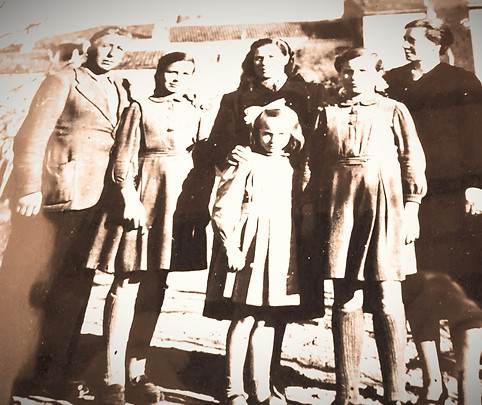
Palazzo Grimani
- The Heart of Le Cà De Boron-
In the heart of Montagnana, Le Cà De Boron unfolds among 14th-century walls and historic alleyways. The main building, once part of the ancient Palazzo Grimani, hosts three apartments and preserves a timeless charm.
Originally a fortification adjoining the city walls, in the 16th century it became home to artisan workshops, particularly ceramists and “baccalari.” During restoration works, remains and ceramic fragments from the 16th and 17th centuries were uncovered.
13th century (1297)
– The Grimani Family-
The Grimani Family became part of the Venetian patriciate after the Serrata of the Great Council.


15th century – Construction of
Palazzo Grimani
The palace was built right next to the 14th-century city walls.
1507
– Artisan workshops -
According to the land registers, workshops of ceramists and “baccalari” were located in the area.


17th–18th century
– The“Charitas” Fresco -
Creation of the fresco with the Madonna and Child and Saints Anthony. Today restored.
Under the palace portico there is a 17th–18th century fresco depicting the Madonna and Child with Saints Anthony of Padua and Anthony the Abbot, together with the motto “Charitas.” Restored thanks to the dedication of the Pesarin-Boron family, it bears witness to the devotion and religious tradition of the city.
ost-war period (1950s)
-Purchase by the Boron family-
In the post-war years, the east wing of the palace passed to Livio Boron, a descendant of an ancient family of landowners in the area. For his time, Livio was unusual: he had chosen to study, becoming an agricultural expert, at a moment when higher education was still rare.
Yet family destiny was not kind to him. Since he had no sons – only four daughters – he was excluded from the inheritance of the vast family estates. Instead, he was offered the opportunity to purchase the palace, which became the residence of his family.
To maintain it, however, Livio was forced to take on humble jobs: from garden maintenance to porterage and other strenuous tasks. He worked with dignity and dedication, but passed away in 1983 with only a modest pension.
His wife, Carmela, remained in the palace as a widow. The youngest daughter, Angelina, together with her husband Guido Pesarin – entrepreneur and father of Luisa – cared for Carmela and, with great commitment, undertook the restoration of the building, then in precarious condition. One wing was designated for tourist accommodation, giving new life to the historic residence.
Carmela remained in her home until the end, passing away at the age of 93, surrounded by the affection of her family and the centuries-old history of the palace.


The Boron Family
– Noble Origins –
Direct descendants of the House of Hohenstaufen, Dukes of Swabia, the Boron family boasts historical ties with Frederick II and the legends of the Holy Grail. According to traditions and medieval texts, the dynasty played a role in the symbolic guardianship of the Shroud and the Grail, passing down stories of faith and mystery.
Hospitality as a Legacy
For generations, the Boron family opened their ancient well to neighbors who had no access to water. This gesture, linked to the motto “Charitas,” still stands today as a symbol of hospitality and generosity.


Luisa Pesarin
& Angelina Boron
The management of Le Cà De Boron is entrusted to Luisa Pesarin and Angelina Boron, direct heirs of the family that has preserved this palace and its traditions for generations.
Angelina, guardian of family memory, has dedicated years to the conservation of the building and the precious “Charitas” fresco. Luisa, with passion and a welcoming spirit, carries the activity forward with special attention to the well-being of guests, combining authentic hospitality with a meticulous care for detail.
Together, they continue to keep alive the tradition of hospitality that has distinguished the Boron family for centuries.
Ask us anything! We are here to answer all your questions.
Email: cadeboron@gmail.com
Address: Via Andronalecca 17/A
35044 Montagnana (PD)
Follow Us
Sign up for updates & special offers
©2025 Le Cà De Boron Montagnana - Powered and Secured by www.luisapesarin.com


